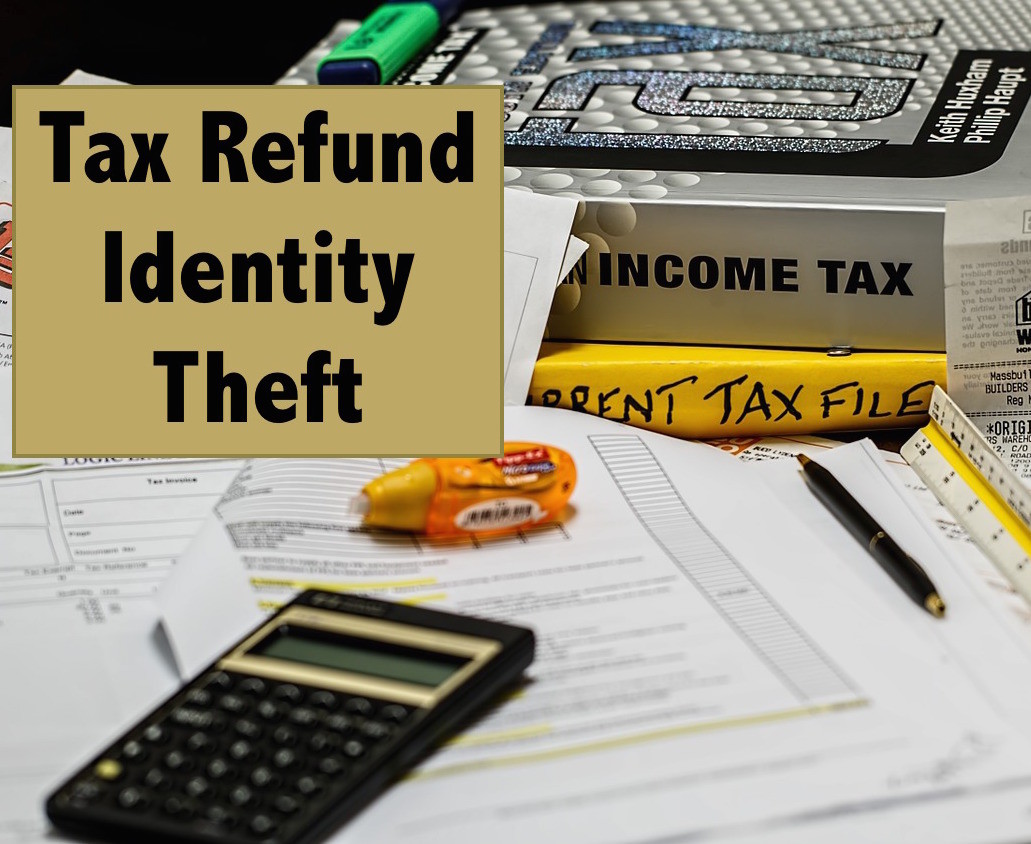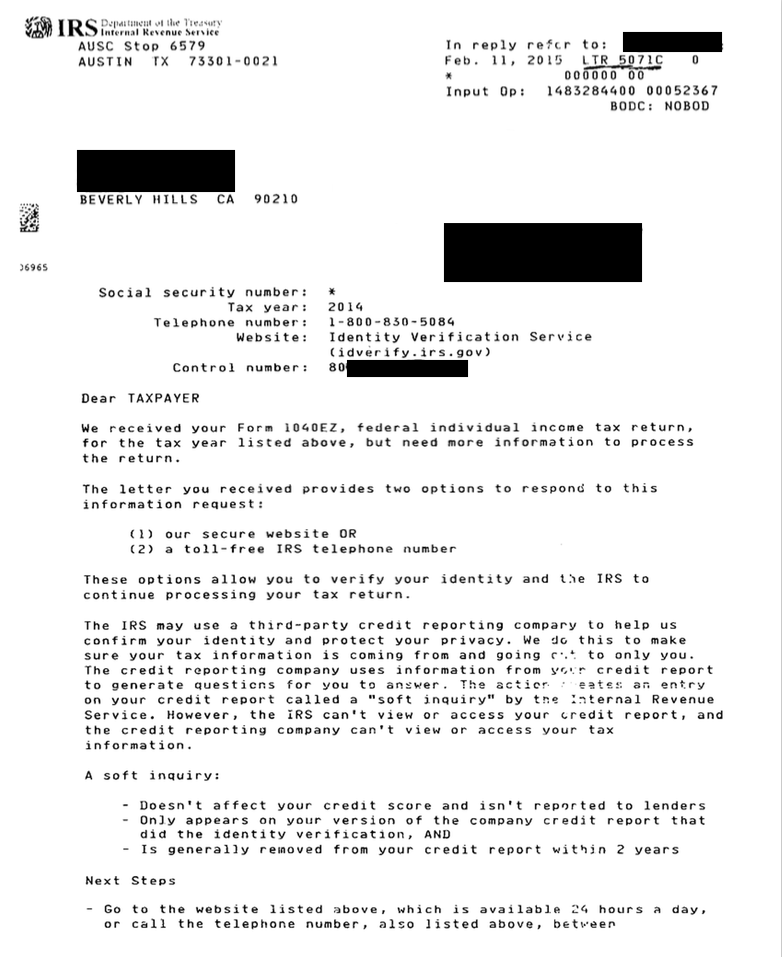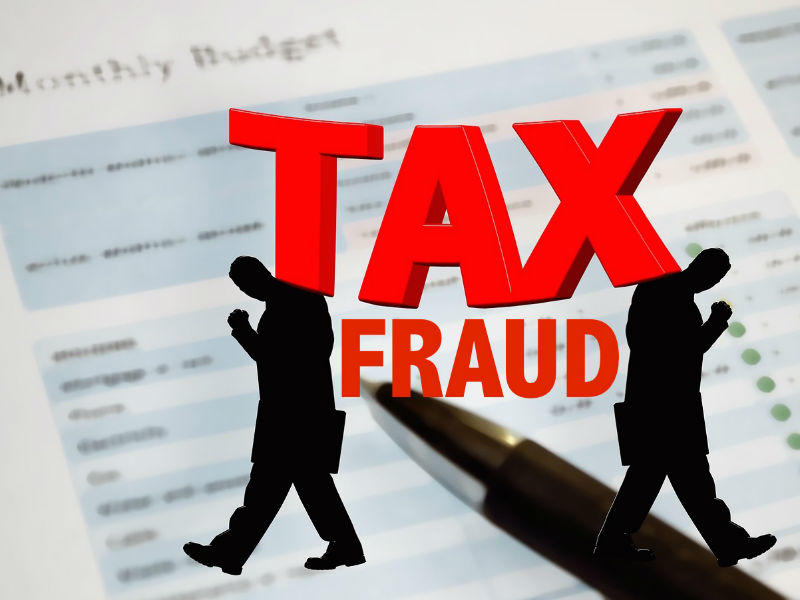Warning Signs of Tax Refund Fraud & What To Do About It
 Tax related identity theft occurs when someone uses another person’s social security number to claim a tax refund from the IRS by filing tax returns early in the tax-filing season. In 2023, there were more than 1 million reports of identity theft received through the FTC’s IdentityTheft.gov website. Consumers reported losing more than $10 billion to fraud in 2023, marking the first time that fraud losses have reached that benchmark. This marked a 14% increase over reported losses in 2022.
Tax related identity theft occurs when someone uses another person’s social security number to claim a tax refund from the IRS by filing tax returns early in the tax-filing season. In 2023, there were more than 1 million reports of identity theft received through the FTC’s IdentityTheft.gov website. Consumers reported losing more than $10 billion to fraud in 2023, marking the first time that fraud losses have reached that benchmark. This marked a 14% increase over reported losses in 2022.
Clues pointing to tax identity fraud:
For purposes of this article, references to “you” or “your” can be replaced by any family member.
- You discover someone filed taxes with your social security number when you try to file them yourself.
- You’re alerted to a problem with your credit report by an entity that you’ve authorized to run a credit report on you. (A family member became aware of tax fraud when he attempted to refinance a property.)
- You receive communication from the IRS such as the letter below.

This letter from the IRS is what lead to discovery of tax fraud for a student who had not filed taxes because he had no income.
- The IRS notifies you that you received wages you did not earn.
- Your social security benefits are denied or amended due to revenue you didn’t receive.
- Your Social Security Administration “Notice of Earnings” lists more income than you’ve earned.
- You receive a 1099 or W-2 from an employer you did not work for.
- You receive a tax refund but you have not yet filed your taxes.
- In the case of my friend’s daughter, the criminal(s) intended for the $4,700.00 refund to be direct deposited to an account but the direct deposit account was set up incorrectly. If the first direct deposit attempt fails, the IRS sends a paper check via postal mail instead.
Seven (7) Steps to Take if you Suspect Tax Related Identity Theft (pertaining to you or a family member)
1. Place a separate fraud alert or a credit freeze on credit reports (use links below) with each one of the credit bureaus. The fastest and easiest way to do this is to do it online but you can also do it on the telephone or by mail.
o Experian: 888-397-3742 Place Fraud Alert or Place a Security Freeze
o TransUnion: 800-680-7289 Place a Fraud Alert or Place a Security Freeze
o Equifax: 888-766-0008 Place a Fraud Alert or Place a Security Freeze
A “fraud alert” identifies an individual as a fraud victim and requests that the business obtaining the report contact that person before granting credit in that name. (It lasts for 7 years or for less time, if removed sooner.)
A “credit freeze” prevents anyone from accessing a specific credit history. (A PIN is required to access that credit history and the credit file must be unfrozen before applying for credit or other services that require accessing that credit history.)
2. File a police report with your local police department.
3. File a complaint with the Federal Trade Commission.
4. Close all financial accounts that were tampered with or opened without you.
5. Respond to official IRS notices but verify the information is authentic first.
6. Complete IRS Form 14039, Identity Theft Affidavit.
7. Check all bank accounts frequently to make sure there are no fraudulent transactions in any of them.
Credit monitoring services are helpful however they are unable to detect and identify all forms of fraud. There is no substitute for being vigilant and frequently checking all financial accounts. That said, one of the advantages of using such a service is some of the plans include follow up and handling of different aspects of fraud, including reaching out to the IRS via a special phone number on behalf of victims.
I will end by reminding you that prevention is so much better than cure! However, if you or a family member do not have the luxury of prevention, the next best option is to identify the problem as soon as possible and to promptly follow the important steps listed in this article to limit the potential damage that could easily occur.
Until next time, … Stay Cyber Safe!





Leave a Reply
Want to join the discussion?Feel free to contribute!